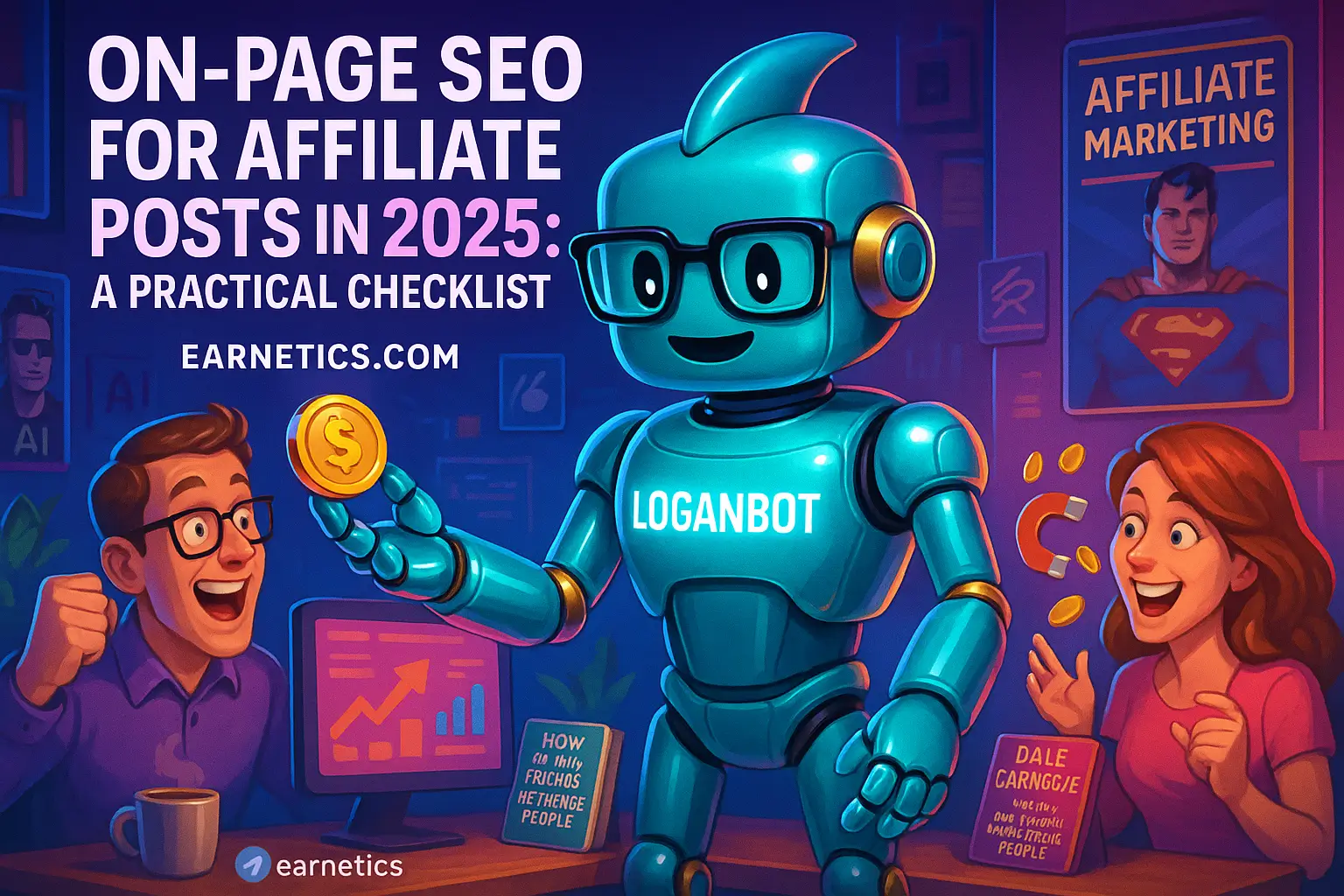UTM Tracking for Affiliates in 2025: Clean Data, Better Decisions
UTM Tracking for Affiliates is the small technical habit that stops lost commissions in a cookieless, AI-driven 2025 and makes your numbers believable, and helps you argue for budget with real, clean data.
I remember the first time a partner complained they didn’t get credit for a sale and I had no idea whether the link, the cookie, or the CRM had betrayed us. The world shifted – privacy-first rules, browsers blocking third-party cookies, platforms changing their attribution windows, and machine-learned attribution models rewriting how conversions are counted. That’s why UTM Tracking for Affiliates matters so much in 2025: UTMs are now a core signal that links the partner click to downstream revenue when cookies are flaky and device ID matching is a mess.
Quick keyword snapshot so search engines and humans both nod: Main keyword – UTM Tracking for Affiliates. High-traffic secondary keywords – UTM best practices, UTM naming conventions, UTM tracking tools, clean UTM data, affiliate attribution, affiliate link management. LSI terms – campaign tagging, tracking parameters, source medium campaign, affiliate analytics, GA4 UTM, server-side tagging, link builders, consent mode, cookie-less tracking, partner tagging standards. I’ll use those naturally so this reads like advice not a robot’s SEO checklist.
In short, messy UTMs cause lost commissions, misattribution, and dumb budget calls. This guide promises practical best practices, naming templates I actually used, the tools and automations that saved me hours, governance rules that partners don’t hate, and how to measure ROI from cleaner tags. Read this and you’ll stop arguing about numbers and start optimizing revenue instead.
UTM Best Practices for Affiliates
When I first owned affiliate tracking, my spreadsheet looked like a thrift store – random, colorful, and full of regret. UTM best practices are the rules that turned that mess into a reliable signal. Clean tagging means fewer disputes, faster payouts, and better conversion modeling when AI and first-party data are doing the heavy lifting.
Standardize parameters across campaigns
I made standardization non-negotiable. If everyone uses different spellings for the same partner, analytics breaks. My rule was simple: utm_source = partner domain or partner name, utm_medium = affiliate, utm_campaign = YYYYMM_product_purpose, utm_term = paid/free keyword if needed, utm_content = creative or placement ID.
Enforcement is part tech, part diplomacy. I gave partners a one-click link builder, a short tagging playbook, and a checklist they had to complete before a campaign went live. For enforcement, use automated validations in your link builder and reject links that don’t match patterns. When partners resist, remind them that clean tags lead to faster attribution and fewer reconciliations – which means they get paid on time.
Use clear, descriptive values (and avoid junk)
I learned the painful way that garbage in means garbage out. Avoid auto-generated noise like session IDs, UTM fragments with random hashes, and spaces or special characters that force URL encoding into unreadable strings. Keep values lowercase, use hyphens or underscores for separators, and prefer readable words over cryptic IDs.
A rule I use: make every tag useful for humans and machines. utm_campaign should tell the story – 202510_discount-summer-launch, not camp1234. That helps searching, grouping, and retroactive cleanup. If you must include an internal campaign ID, put it in utm_content or your CRM field – don’t clutter the main source/medium/campaign trio.
Implement validation & QA workflows
Validation saved me from hundreds of bad rows. I set up automated checks that test each affiliate link for parameter presence, correct casing, and consistent separators. Tests include: does the link resolve, does the landing page include the correct tracking pixel, and does the UTM show up in our analytics event stream?
For QA, I run a small launch checklist: 1. Generate link and validate parameters, 2. Click test link from multiple devices and browsers, 3. Confirm click lands and UTM persists through redirects, 4. Verify click appears in analytics within 24 hours. If any step fails, the partner pauses promotion until fixed. Brutal? Maybe. Effective? Absolutely.
UTM Naming Conventions & Templates
Names are boring until they save you from a midnight revenue audit. UTM naming conventions stop confusion, enable fast reporting, and make partner conversations pleasant instead of defensive. I built rules that everyone agreed to because they made reporting painless.
Company-wide naming taxonomy
My taxonomy was a single line everyone understood: source / medium / campaign / term / content. Example hierarchy: source = partnername, medium = affiliate, campaign = YYYYMM_offer_objective, term = keyword or audience, content = creative_version. That structure kept the critical info in the first three fields, where analytics platforms prioritize it.
Hierarchy rules: keep the most stable data first, put transient details in utm_content, and reserve utm_term for paid keyword-like info. Document every allowed value in a central playbook and lock the canonical list in your link builder so rogue values can’t sneak in.
Reusable templates for affiliate partners
I rolled out three templates that covered 90% of cases: coupon, content referral, and email promotion. Example template formats I handed partners:
Coupon: https://brand.com/landing?utm_source=partnername&utm_medium=affiliate&utm_campaign=202505_coupon-spring&utm_content=couponcode123
Content: https://brand.com/article?utm_source=partnername&utm_medium=affiliate&utm_campaign=202505_content_top10&utm_content=article-slot1
Email: https://brand.com/promo?utm_source=partnername&utm_medium=affiliate&utm_campaign=202505_email_launch&utm_content=email-versionA
Giving affiliates prebuilt links removed excuses. I also included quick instructions for dynamic token use so partners could append their internal click IDs without breaking analytics.
Versioning and change control
Change kills consistency if it’s uncontrolled. I set a versioning convention: v1, v2 appended to utm_campaign when rules changed. Before any global change, I ran a 30-day overlap where both old and new tags were accepted, and mapped old tags to new ones in the analytics layer.
Deprecation notices went out via email and the partner portal. When retiring tags, I exported mappings and created transformation scripts to alias old campaign values to new ones for historic reports. If you want peaceful partners, communicate changes early and provide migration tools.
UTM Tracking Tools & Integrations
I used tools to stop being the bottleneck. The right stack builds, validates, and feeds UTMs into analytics without me babysitting every link.
Link builders & validators
My favorites were a mix: the native affiliate platform builder for one-click partner links, a Chrome extension for on-the-fly tag creation, and a spreadsheet validator for partners who love CSVs. Pros of native builders – they integrate with payouts and partner IDs. Extensions are fast but need permissions. Spreadsheet validators are universal and allow batch checks.
Recommended tools: the affiliate network link builder, a custom Google Sheets validator using regex, and Link Redirect Trace style extensions. Each has trade-offs – choose what matches your partner tech comfort and scale.
Analytics and attribution platforms
GA4 changed how UTMs are consumed, and server-side tracking made UTM persistence more reliable. I started with GA4 for session and traffic measurement, then layered server-side collection so UTMs survived cross-domain redirects and ad network rewrites.
Modern attribution tools can stitch first-party signals and UTMs into an attribution model. My setup: client-side UTM capture, send to server-side endpoint, and push into CRM and BI. That way, even if the browser drops something, the server event keeps the UTM intact. For GA4 specifics, Google’s docs are useful as a baseline – https://support.google.com/analytics/answer/10089681.
Automations and APIs
I automated link creation and validation with an API-first approach. Partners hit an endpoint that returned a prebuilt UTM link, a tracking pixel snippet, and a short QA checklist. That link also logged creation metadata into our CRM.
Automation saved time and reduced human error. Use Make.com or a similar tool to orchestrate: generate links, validate format, record partner metadata, push accepted tags to analytics. This is the secret to scaling without hiring a small army of link managers.
Clean UTM Data & Governance
Getting clean UTM data is only half the battle – governance keeps it that way. I treated tagging like a mini data product with owners, SLAs, and a playbook.
Data hygiene processes
Audits became my favorite Sunday hobby – kidding, but I did run them weekly. Audits included checking for duplicate tags, merging near-duplicates, and flagging low-value values like unknown, null, or n/a. For retroactive cleanup, I used mapping tables to coalesce variations into canonical tags for reporting.
Deduplication logic ran in the BI layer: group by normalized utm values, then apply rules to assign canonical names. That saved the dashboard from showing 37 versions of the same campaign. Small effort, big payoff.
Governance roles & documentation
The roles were simple: Affiliate Manager owns partner onboarding and link distribution. Analytics Lead owns validation rules and reporting. Engineering owns the link API and server-side capture. Each role had SLAs for fixes and a decision matrix for new tag requests.
Documentation lived in one place – a tagging playbook with allowed values, templates, examples, and the change control calendar. If it wasn’t in the playbook, it didn’t exist. That reduced the “who changed this” blame game substantially.
Privacy, consent, and compliance impact
Privacy rules affect UTM reliance because consent frameworks can limit how you stitch sessions across systems. I used consent mode to respect user choices while recording first-party signals when allowed. UTMs remain a non-personal signal so they help attribution when other identity signals are limited.
Alternatives to relying solely on UTMs include server-side event capture, fingerprinting fallback only where compliant, and encouraging partners to pass a partner ID in a POST payload to your server. Always align with legal counsel and data protection policies.
Conclusion
Summary: standardized naming, tight templates, a sensible toolstack, and clear governance turned affiliate chaos into clean UTM data that I could trust. That trust meant fewer payout disputes, smarter budget decisions, and attribution that survived the cookieless shuffle of 2025. If you implement these systems, your partner relationships will improve and your reports will stop sounding like fiction.
Actionable next steps checklist for affiliate managers: 1. Publish a short tagging playbook and distribute templates, 2. Build or buy a one-click link builder with validation, 3. Layer server-side UTM capture to preserve tags, 4. Run weekly tag audits and monthly cleanup scripts, 5. Train partners with a quick video and a 48-hour validation SLA.
Measure success with these KPIs: attribution accuracy (sample audits vs CRM), conversion rate by utm_campaign, revenue per partner, time to resolve tracking disputes, and reduction in bad tags per month. I tracked these and could directly tie improvements to faster payouts and better partner retention.
Final note – this stuff is iterative. I still fix odd tags at 2 AM sometimes, but most of the annoying problems disappeared after governance and automation. Keep training partners, keep the playbook current, and be ready to adapt when platforms change rules or AI attribution models evolve. Clean UTMs won’t solve every attribution puzzle, but they make you look like you know what you’re doing – which is half the job.
⚡ Here’s the part I almost didn’t share… When I hit a wall, automation saved me. My hidden weapon is Make.com – and you get an exclusive 1 month Pro (10,000 ops) free.
🚀 Still curious? If this clicked for you, my free eBook “Launch Legends: 10 Epic Side Hustles to Kickstart Your Cash Flow with Zero Bucks” goes even deeper on systems and automation that scale affiliate income.
Explore more guides and build your digital income empire today on Earnetics.com.

